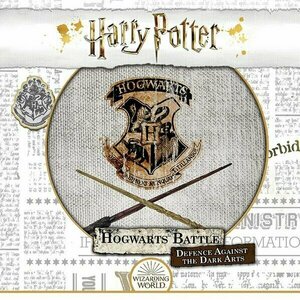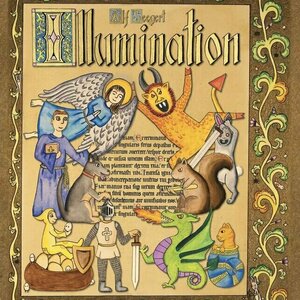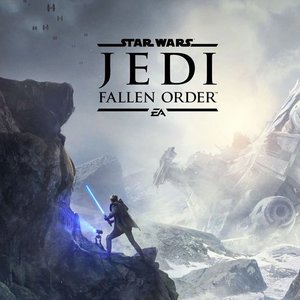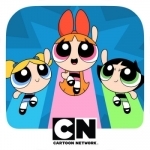
Flipped Out – The Powerpuff Girls Match 3 Puzzle / Fighting Action Game
Games and Entertainment
App
Destroy monsters with match 3 puzzles or punch their lights out in action-packed melee. Play both...

C++ Programming Language - Compiler with Reference
Reference and Utilities
App
The classic C++ programming language for iPad, iPhone and iPod touch. Programming language is a...

Solitaire City Classic
Games and Entertainment
App
No ads or In-App purchases! Play Klondike solitaire, the world's most popular solitaire/patience...

Kurio – App Berita Indonesia
News and Lifestyle
App
Want to read more news that is more accurate and "sane"? Kurio is the place. Enjoy completeness of...
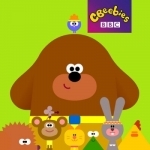
Hey Duggee: We Love Animals
Games and Education
App
**** As seen on Nick Jr. **** Duggee's back and this time he's awarding the We Love Animals Badge....

Real Racing 2
Games and Entertainment
App
Read on for important info below! **Fully enhanced for iPhone 5.** Get ready for the most...
Like I just mentioned, Defence pits two players against each other in a sparring scenario. Players will be drafting cards that represent Spells to sling, Allies to aid, and Items to help knock opponents off their balance. The winner of Defence is the wizard who can stun their opponent three times. Only then will they be able to stand a chance against their dark foes.
DISCLAIMER: We were provided a copy of this game for the purposes of this review. This is a retail copy of the game, so what you see in these photos is exactly what would be received in your box. I do not intend to cover every single rule included in the rulebook, but will describe the overall game flow and major rule set so that our readers may get a sense of how the game plays. For more in depth rules, you may purchase a copy online or from your FLGS. -T
To setup a game, follow the rulebook instructions to lay out the main duel board and its shuffled decks that will surround it. These include the Hogwarts deck (from which players will be purchasing cards to add to their discard piles), the Library deck (which includes only Books cards that add influence or the ability to draw the top card of the player deck), Hexes (which are placed directly in the opponent’s discard pile and must be dealt with first when in hand), and Banished cards. Each player will choose a House card and a matching mover token to be placed on the board. Likewise, each player will have a starting hand of seven Alohomora! cards, one Wand, one Cauldron, and one starter Ally: Owl, Toad, or Cat. Each player will shuffle their starting deck, drawing five for their starting hand. Determine the starting player and the duel may begin!
On a player’s turn they will first deal with any Hex cards they have acquired, following the instructions written on the card. Once cleared, the active player will play cards from their hand in any order they wish to gain Influence to purchase cards from the Classroom (market), Attack points to push back their opponent towards the Stun space, or Health points to move their own mover token one space closer to the Starting space on the board.
Cards that are purchased from the Classroom can be Items, Spells, or even Allies. Items and Spells typically provide Influence, Health, or Attack, and some will have House bonuses in addition to normal effects. In order to take advantage of the House bonus, a player will either need to be from the affiliated House, or have an active Ally belonging to the affiliated House. This is a new mechanic in this game and adds another layer of strategy to a player’s purchasing.
As wizards duel back and forth slinging Spells, recruiting and activating Allies, and using Items to push back their opponent, one wizard will be stunned. When this happens the players will reset their play areas by combining all of their cards they have in their possession. Shuffle the lot of them, draw another hand of five cards and reset their mover token back to the Starting space. The next round is ready to begin and the wizard who stuns their opponent thrice will be crowned champion! Or get an A for the day… or whatever the Common Core equivalent is nowadays.
Components. I have many great things to say about the components in this box and a couple little gripes. Gripelets, really. First gripe: the box comes with a cardstock sleeve. It is very cool and looks great, but it’s unnecessary and I find it keeps snagging on other boxes and such. Not a big deal, as I can always get rid of it, but that’s an opinion. Second, the board is very dark. It features a very dark purple (yay purple!) with black spaces upon which players move their tokens. The colors are very close under certain lighting and I wish there was even just a faint outline of the spaces in a white or gray. Lastly, and probably just me and the way I play, the Attack and Health trackers are almost completely unnecessary. I know you are supposed to take a token every time you “Gain” a Health or Attack point, but I always just keep track in my head thus negating the need for the tokens.
But onto the great. Literally everything else is great. I have always enjoyed the components in the original game, and as this one contains many of the same, I also enjoy these. The art style is interesting and pretty cool, and I really don’t mind screencaps as much as many others do. So for me, overall, I really enjoy the components here.
All in all I truly love this game. I am almost always in the mood to play Harry Potter: Hogwarts Battle, but it is cooperative and my wife doesn’t really enjoy the OG HP game. This one, however, she does enjoy because she can just flex on me and stun me into oblivion with her superior deckbuilding abilities. This one is quicker to setup and play, and holds a much smaller footprint. The mechanics are familiar without being totally duplicating, and I just love deckbuilders in general. So this one was bound to be a big hit with me from the start.
If you are looking for a great Harry Potter-themed deckbuilding game and are not completely sold on the bigger cooperative game, take a look at this much smaller two-player competitive title. Do try to take some of the cards with a grain of salt, as I am sure it is difficult to imagine having both Hermione and Draco as allies simultaneously, but it can happen in the game. Purple Phoenix Games gives this one a very enthusiastic 11 / 12. Just a word of caution, try not to Flipendo your table when you lose. It won’t end well.
Purple Phoenix Games (2266 KP) rated Illumination in Tabletop Games
Oct 5, 2021
Illumination is a game about two monks who are tasked with illuminating the pages of manuscripts with drawings in the hopes of becoming the next head of the Scriptorium: The Scriptmaster, one might say. However, one of the monks gets a little itch and begins to draw irreverent subjects, like demons, dragons, and such. Which monk will earn the made-up-by-me title of Scriptmaster? Guess you will have to play to find out.
DISCLAIMER: We were provided a copy of this game for the purposes of this review. This is a retail copy of the game, so what you see in these photos is exactly what would be received in your box. I do not intend to cover every single rule included in the rulebook, but will describe the overall game flow and major rule set so that our readers may get a sense of how the game plays. For more in depth rules, you may purchase a copy online or from your FLGS. -T
As with many games that are well endowed with components, setup can be a bit of a task. The game will be focused around a few main areas. First, the three manuscript pages are placed on the table in any orientation, with the purple wild Drollery tiles placed on one text box on each page. The Monastery mat is placed nearby as well, with the Abbot pawn randomly placed on a blank station. This pawn will be moved around the map during play to determine which rituals may be performed at any one time. Each player will have their own player mat, upon which will be placed their starting gold (1 for the Reverent player and 5 for the Irreverent player), as well as their starting nine Illumination tiles. The rules mention separating all the Illumination tiles into stacks of three, choosing three of these stacks to flip over and place on the play mat without altering the order. This is very important to keep the tiles in their randomized order. The remainder of the tiles are to be placed nearby in stacks of three. Each player is dealt one starting Scriptorium card and a random Crusade card that will offer bonuses at the end of the game. Once all setup, the game may begin with the Reverent player’s turn.
On a turn, the active player will choose from their mat one row or column of three tiles to be played. They take the three tiles and place them upon one of the three book pages on the table, in the margins. From there the player can choose any tile from the margin to place onto the page in any order they wish, upon any quill icon they choose (except for coin tiles – those simply grant two coins immediately). If the tile is placed on a quill of a matching color to that of the tile, the player will immediately collect one coin and place it on the player mat. If the tile is placed on a quill and orthogonally touches a tile of the matching color, the player then collects a Ritual token of the same color. These Ritual tokens are used in sets of three, four, or five in order to earn VP for end of game scoring. Each purple Drollery tile is wild for the purpose of placement and Ritual token collection. Each tile placed will collect its earnings immediately, and any coins earned may be spent immediately as well.
A player may use coins for several purposes throughout the game: move a tile from the margin of one book to the margin of a different book, move the Abbot one space along the track for Ritual purposes, or to draw a Scriptorium card. The other resources are Ritual tokens, and may be spent during the turn as well. In order to spend these, the Abbot must be on the matching location on the Monastery board, and the player may spend three, four, or five matching tokens to perform the Ritual. They discard the tokens, place one of their cubes upon the appropriate icon on the Monastery mat for VP at game end.
At any time during the turn Scriptorium cards may be played. These are very special cards that allow the player to complete certain actions that break the normal rules. This could be a free movement of the Abbot, or switching places of two tiles on the player mat, or even banishing one of the opponent’s tiles to another book entirely.
Why mention the battles in the intro if they are not part of the game? They are. Once opposing foes are placed orthogonally from each other, and all involved tiles are completely enclosed by other tiles or board obstacles, a Bounded Battle will begin. Battles are simple to resolve as it requires players to count the number of combatants on both sides and whichever side has more forces wins the battle. The winner places their cube on the appropriate battle card near the Monastery mat, and the loser gains coins equal to the number of their tiles lost to battle. Tiles that are lost are simply flipped to its opposite side.
Play continues in this fashion of players choosing and placing tiles, drawing and using Scriptorium cards, performing Rituals, and resolving Bounded Battles until both players pass their turn. The game is then over and VP counted in all their places around the play area. The player with the most points becomes the next Scriptmaster Flex and is able to enhance or defile as many manuscripts as they like!
Components. This game has a lot of components, but they are mostly cardboard tiles, cardstock cards and mats, and wooden cubes. The quality is all very fine, as to be expected with Eagle-Gryphon games. The art, for me, is the biggest drawback of the game. I UNDERSTAND why it looks the way it does – in trying to stick with a Medieval manuscript theme some decision were made on the style. It just doesn’t vibe with me. I took a look at the new edition of The Road to Canterbury, by the same designer and publisher, and loved the look of it. I REALIZE that the tiles are supposed to be not only reminiscent of the art style of that time period, but also imaginations of monks and their doodles, but it’s just not for me. I do like the looks of everything else except the art on the tiles, and when that’s the majority of the components I am looking at, I sigh a little. I am absolutely no artist, and I can acknowledge that the art presented is very good and in line with the theme. Oh well.
The game play is very solid, and I do like it quite a bit. Everything makes a lot of sense as to why you are doing the actions, and the most difficult thing to comprehend the first time through is the Bounded Battles. You see, battles don’t immediately happen when you pit one foe against another. In fact, all tiles engaged need to be surrounded by other tiles or battleground obstacles before battle can begin. This allows both sides to add more tiles to help sway the balance of power, and can get a little confusing for some players. Not ME, of course, but SOME players (ok it was totally me the first time through). I am thankful that resolving the battles are pretty simple, and winning battles gives the victor a cool five points.
Other aspects I really enjoy are the Scriptorium cards and the Rituals. Again, the Scriptorium cards can be drawn for two coins during the game and can provide excellent rule-breaking choices to the players. Any time a game has cards that bend the rules, I generally am a fan. The Rituals are merely tokens that are collected and then turned in for points. This doesn’t necessarily sound that interesting until I reveal that a player board only has space for seven items: Ritual tokens AND coins included. So a player may be stacking up coins, and not have space for Ritual tokens or vice versa. Hard choices need to be made sometimes, but to help with that Ritual tokens can also be used like a coin, but not the other way around. So there is no buying Ritual tokens. Having that restriction of seven items on hand is a really nice touch, and makes each turn important.
So all in all I enjoyed my plays of Illumination. I have yet to try the solo version that is included, but I will soon. I feel that of the two Medieval series games I have played I prefer The Road to Canterbury, but I do like the different feel of Illumination. Having a solo mode is also very attractive to me because my wife and I do not always have matching schedules where we can game together. I like Illumination for the actual gameplay, but the art is a turn-off for me. Purple Phoenix Games gives this one an irreverent 4 / 6. If you are looking for something a little different that features some interesting game play, tons of choices, yet is restrictive as well, take a look at Illumination. Try not to complete too many wine and candle rituals though. Those two things don’t mix very well in my experience.
Daniel Boyd (1066 KP) rated the PlayStation 4 version of Star Wars Jedi: Fallen Order in Video Games
Mar 1, 2020 (Updated Mar 1, 2020)
Apparently you get something that doesn't feel like Star Wars.
I have a fair number of problems with this game, so I'm going to go ahead and list them and explain why they bothered me so much during my experience playing through Fallen Order.
First of all, when this game dropped and did pretty well commercially and critically, EA were commended in the games media for having the guts to release a single-player, story based Star Wars game with no online play. When the reviews dropped just before the game's release, this news got me really hyped as I have never been much for online gaming and much prefer story based games over anything else. Now whilst EA did give us a single-player, offline Star Wars story, they did so in such a sloppy, janky, half-finished fashion.
I lost count of the amount of times that I had to restart my game because of loading errors or game breaking bugs. Almost every time I would enter a new area the characters would initially appear in a T-pose position and remain that way for a good few seconds until I approached them. Onscreen prompts would often fail to appear making the game's already confusing exploration methods even more unclear. I have not seen this much pop-in in a videogame since the first version of No Man's Sky. Almost every area was covered in murky textures upon initially entering them, with some entire structures and areas failing to render. During a few boss fights, the AI character would fail to attack me and just stand still and no matter how many blows I would land on them, their health bar would not budge until I fully reloaded the level. This sort of thing was present during every one of my play sessions and at a few points the game became almost unplayable due to it's glaring technical glitches. Also, I got this game as a Christmas gift, so it has been out for a decent amount of time. A game of this calibre, that has been out for months at this point, from a major studio like Respawn and a publisher like EA, not to mention being from a major franchise like Star Wars, - the fact that it is in the current broken state that it's in is frankly unacceptable.
The next issue I had was the story and characters in the game. The game's protagonist Cal, is an unsympathetic, whiny bitch of a character that got on my nerves every time he opened his mouth. The rest of the crew were also pretty bland, unendearing and lacking in much personality. I grew up loving the Star Wars universe, yet I found myself trying in vain to skip almost every cutscene and really not giving a crap what happens to any one of the characters. The villains were unengaging and the other side characters like Cal's master and the old dude that left holograms for Cal to find got increasingly annoying every time they appeared. The only character I found engaging throughout the whole game was Sister Merrin.
I always thought Jedi Knights were supposed to be extremely capable, powerful warriors, yet at no point in this game do you ever feel powerful in any significant way. The whole time, you feel on par with the non descript enemies that you are fighting. While I agree that the last major AAA single-player Star Wars game, The Force Unleashed was too easy, at least you felt powerful while playing as that character. The combat never feels as satisfying as it should due to the lack of dismemberment. The decision not to allow the player to chop off limbs makes it feels more like you are hitting enemy shaped piñatas with a big stick, rather than welding a laser sword of pure, raw energy. I also felt that there was a lack of variation in the combos and moves-set and found myself watching the same animations over and again no matter what combination of buttons I was mashing. Every fight in this game is hard and not in a fun,challenging way, but instead in a grinding, irritating way. The ridiculously long loading times also made dying even more frustrating. If you are going to design a game where the player is going to die frequently, you HAVE TO have a snappy respawn system in place à la Super Meat Boy or Hotline Miami. (Especially when your fucking studio is called RESPAWN, but I digress.) They were clearly going for a more defensive, methodical approach to the combat system, which is fine, but they should have given you a choice between that and a more aggressive, offensive skill tree, meaning that more play styles could be catered to. Another majorly annoying thing was the way that the game justified unlocking new skills for Cal, with him having out-of-the-blue flashbacks at seemingly random points in the story where he would suddenly remember that he could wall-run or double-jump. I hate when games do this, it feels extremely lazy and unjustified within the context of the story that is being presented. Another thing that bothered me gameplay-wise was the checkpoint system. The whole refilling your health = respawning the enemies thing felt really arcady and often broke immersion.
Something else that I hate in games is when the game tries to pretend that it is an open world game rather than a linear experience, which this game does. I don't understand why you would want to masquerade as an open world game when that mechanic has been so oversaturated for this entire generation. After you play through the game's intro and get access to the ship, you are given the impression that you can choose what order to visit each planet and progress though the game. However this is not the case. When I was first given the choice to pick a planet, I chose Dathomir as I am a big Darth Maul fan and thought it would be cool to explore his home turf. I got there and was making my way through the clear-as-mud holomap when I got to a section where I could not progress. There was a jump that I just could not make no matter how many times I tried. After eventually getting fed up I had to look up a walkthrough to find out how to progress whereupon I learned that you actually need to go to the other planet first and gain an ability to make this jump. Now even if I did design my game so poorly that I let the player go to the wrong planet on their first travel, I would have at least had the decency to put in a prompt at the un-passable jump to let the player know that they don't have the skills to progress here yet and to go to the other planet and return here later. It could have been a voiceover from a crew member or even an immersion-breaking piece of text, but something would have been nice to prevent me having to look up a walkthrough to learn this fact. Witnessing this ineptitude in game design from such a major studio was shocking. So yeah, from that point on, - lesson learned, - I just followed the checkpoints to decide what my next planet would be to travel to, but then why even give players the illusion of choice in this? Why not just usher the player automatically to the next planet they need to visit after they return to the ship?
My final and biggest issue with this game is despite it being a Star Wars game, it never really felt like Star Wars. I noticed this during the first third of the game in the some of the character designs. Some of the side characters looked more akin to something from Ratchet & Clank than from the Star Wars universe. Then as I was playing through Kashyyyk and fighting spiders and giant slugs, I'm thinking to myself, I don't ever remember Luke Skywalker doing this and that dude lived and trained in a swamp for like a year. Then the shark was well and truly jumped. Upon revisiting Dathomir and finally being able to make some progress, a character literally raises bodies from the ground for you to fight. That's right, they put zombies in a Star Wars game. I thought since Disney had taken control of Star Wars, that they were way stricter than Lucas ever was about what does and doesn't get into the Star Wars universe, so whoever greenlit this zombie shit over at Disney should really get the boot. I can't quite believe that I'm saying this, but if you want a more authentic and higher quality Star Wars videogame experience, go play Battlefront 2. Sure it may have had an extremely messy launch and been marred with controversy ever since, but at least it feels like Star Wars.
There were a sparse few things that I did enjoy. As I mentioned above, Merrin was a fairly engaging and well acted character. The Lightsaber customisation was also pretty neat. I also enjoyed the music and (SPOILERS,) the brief appearance that Darth Vader makes. However the music is only great because it's the Star Wars score and whilst Vader's appearance as an unstoppable force was cool here, I personally feel like it was done better in Rogue One.
So yeah, I kind of feel like I played a different game to everyone else. I really wanted to fall in love with this game and I kept waiting for it to win me over, but unfortunately it never did. I think that there is potential here for something better, mostly owed to the interesting time period the game is set in on the Star Wars timeline, so I really hope that they take the few good elements that were present in Fallen Order and improve upon everything else for the sequel.

